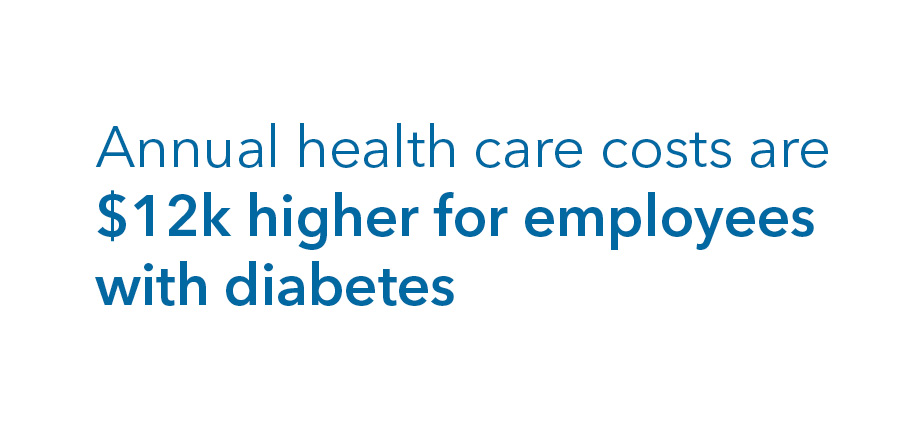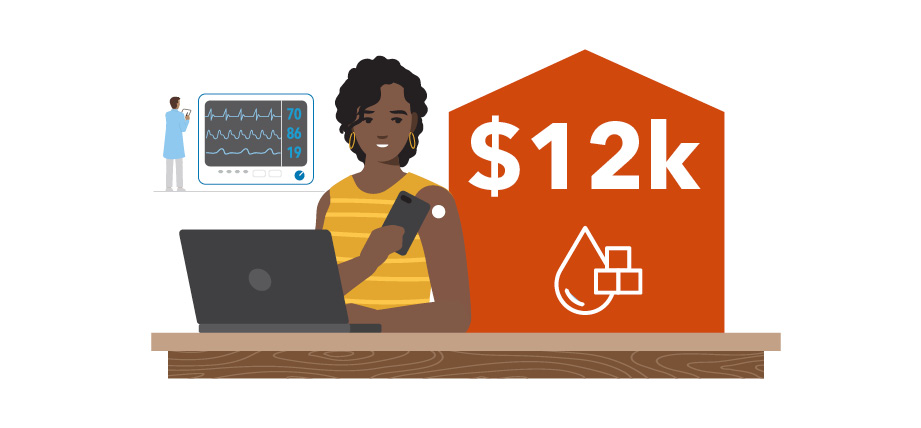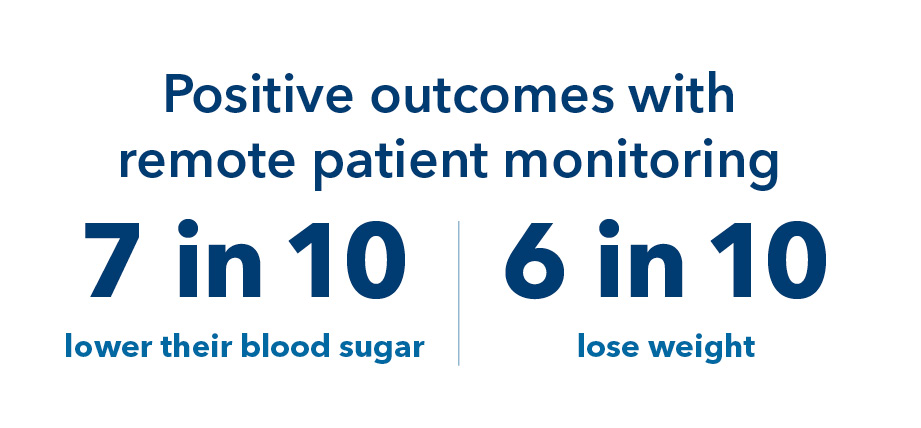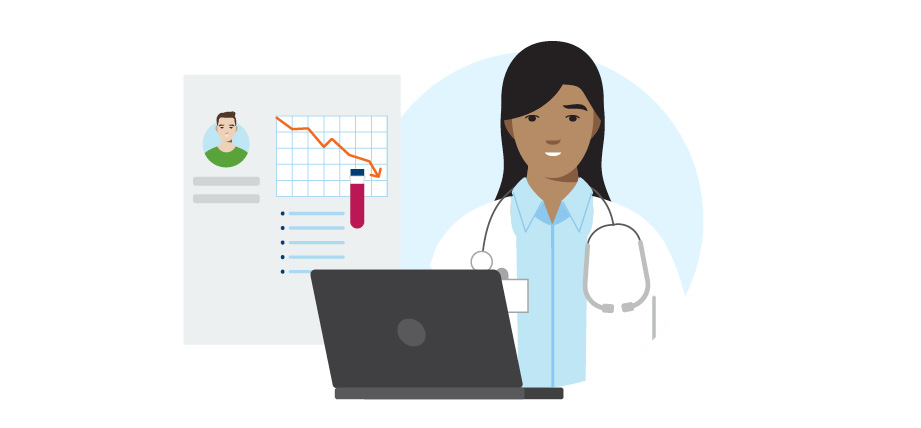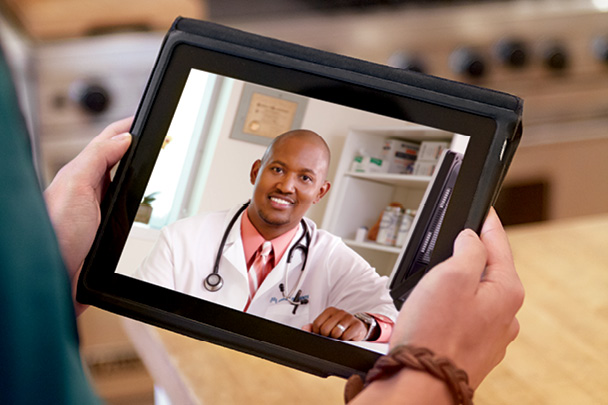Diabetes can often lead to more serious and costly health problems like kidney disease, heart failure, and stroke. For example, employers spend 252% more on health care for diabetic employees who develop kidney disease — to the tune of $68,325 per member per year.11 And when employees with type 2 diabetes develop heart disease, their health care costs increase by up to $9,705 per year.12
Telehealth technology offers revolutionary solutions
Traditional in-person medical care is essential in minimizing the impact of diabetes on both employee wellness and employer health care costs. But newer technologies like remote patient monitoring and virtual care have emerged as transformative diabetes care solutions with significant improvements in maintaining recommended blood sugar levels, or glycemic control, for type 2 diabetes.13 This is a key therapeutic goal because good glycemic control can prevent complications, which can reduce quality of life and life expectancy, and increase health care costs.14
Remote patient monitoring
Remote patient monitoring (RPM) connects employees to their care teams and transmits blood sugar level readings in real time. Using this data helps identify problems earlier, so doctors can adjust treatment faster — reducing both risk and cost.
Once on insulin, many employees transition from daily finger pricking to continuous blood glucose monitoring. This involves wearing a sensor where readings are more frequently recorded and uploaded to a reader or smartphone. With more regular glucose readings, the employee and their doctor can get better insight into how diet, exercise, or medications impact the employee’s glucose levels and if adjustments may be needed.
Dr. John P. Martin, who specializes in internal medicine and diabetes care at Kaiser Permanente, sees the benefits of remote patient monitoring, “Information that is quickly available is power, whether you're a patient trying to understand the impact of your own choices or a physician trying to make active changes to a patient’s care plan.”
Numerous studies show that employees who use remote patient monitoring for diabetes are better able to manage their blood sugar — reducing their average blood sugar levels, or A1c, by an average of 0.55.15 When you consider that healthy A1c goals for type 2 diabetics are between 7% and 8%, a 0.55 improvement is significant.16
In fact, one study found when employees with type 2 diabetes participated in remote patient monitoring:17
- 67% decreased their A1c
- 58% reduced their base metabolic index (BMI)
- 67% increased compliance with their treatment plan

